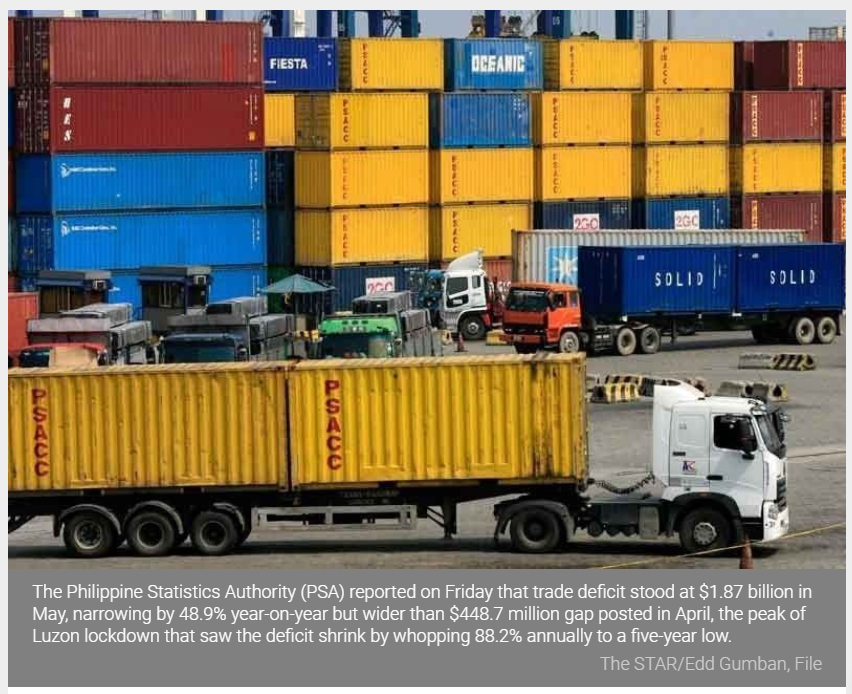Philippines: Trade deficit narrows at slower pace in May as economy gradually reopens
MANILA, Philippines — A persistent pullback in both exports and imports continued to shrink the Philippines’ trade gap in May albeit at a slower pace than the previous month, with the government welcoming this as a sign of economic recovery from a shutdown meant to stem the spread of coronavirus infections.
The Philippine Statistics Authority (PSA) reported on Friday that trade deficit stood at $1.87 billion in May, narrowing by 48.9% year-on-year but wider than $448.7 million gap posted in April, the peak of Luzon lockdown that saw the deficit shrink by whopping 88.2% annually to a five-year low.
Government statisticians also recorded a total trade of $9.84 billion in May, the final month of enhanced community quarantine in Luzon. That was higher than April’s $6.12 billion but way below $16.05 billion recorded before the pandemic struck in May last year.
More specifically, goods exports amounted to $3.99 billion in May, while imports reached $5.86 billion. Outbound and inbound shipments collapsed 35.6% and 40.6% year-on-year, respectively, although the declines were slower compared to the record drops seen in April.
“The slower decline in trade performance is a welcome indication that economic activity has started to pick up with the relaxation of quarantine measures in certain areas, the gradual reopening of business, and the restarting of production in both the country and its trading partners,” acting Socioeconomic Planning Secretary Karl Kendrick Chua said in a statement.
“Although still negative compared to last year, these represents slight improvements compared to last month,” Chua added.
Outlook still bleak
Separately, Nicholas Mapa, senior economist at ING Bank, said that while the narrowing of the trade deficit should be supportive of the strong-peso for now, it also highlights that the economy is headed for a protracted slump.
“The narrowing of the trade deficit was driven in large part by import compression translating into anaemic demand for the dollar with corporations looking to hold on to peso liquidity given the uncertainty,” Mapa said.
“The bleak economic outlook means that most investors are likely to shelve capital-intensive plans for the time being or until economic conditions improve,” he added.
Overall, Sergio Ortiz-Luis, president of the Philippine Exporters Confederation Inc., an industry group, said exporters are likely to experience a challenging year even as quarantine measures, especially in the business center of Metro Manila, were eased starting June 1.
The lack of public transport is to blame, Ortiz-Luis said.
“We want the government to move faster in solving the public transportation so more people can go back to work,” he said in a phone interview.
Source: https://www.philstar.com/business/2020/07/10/2027038/trade-deficit-narrows-slower-pace-may-economy-gradually-reopens


 English
English




